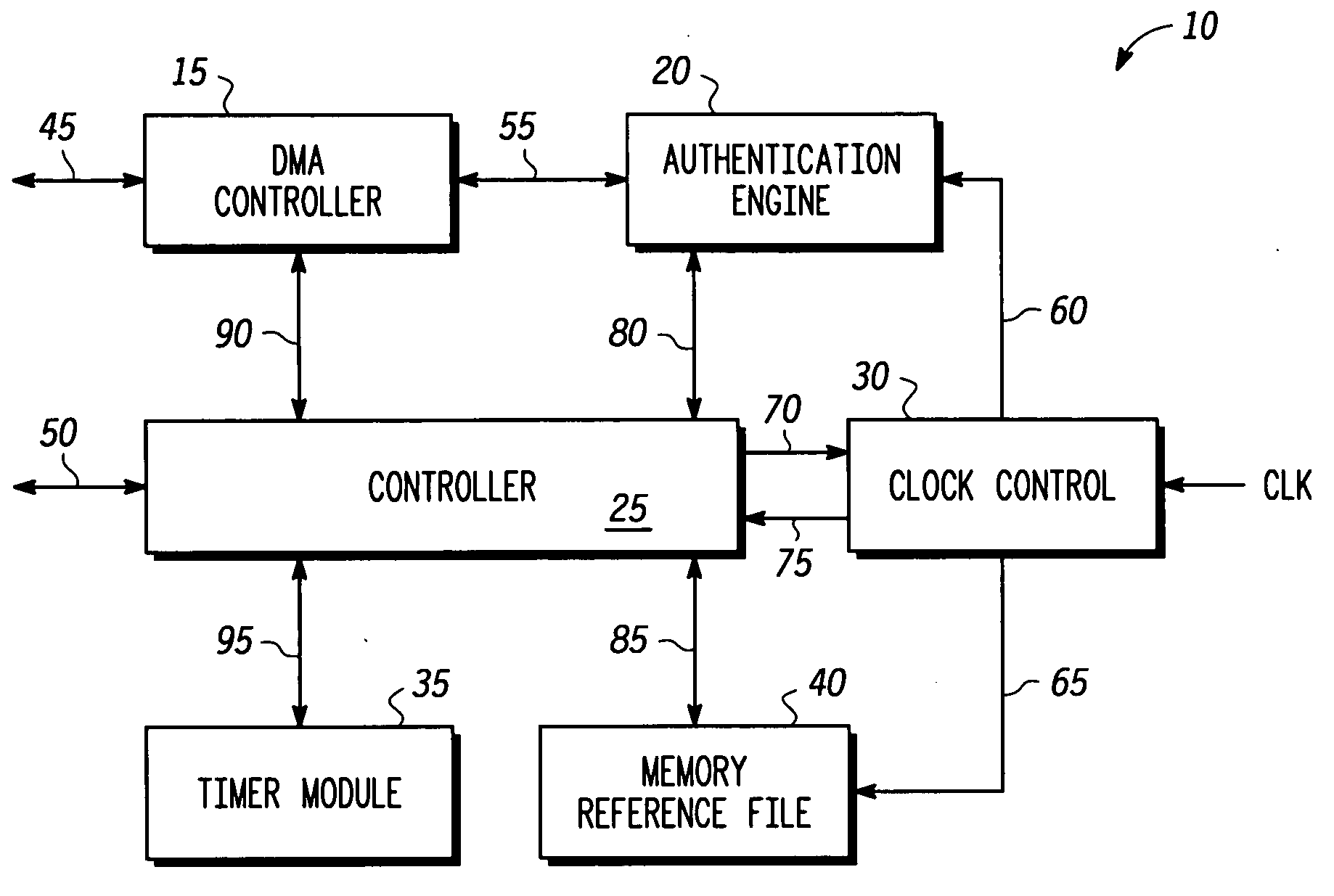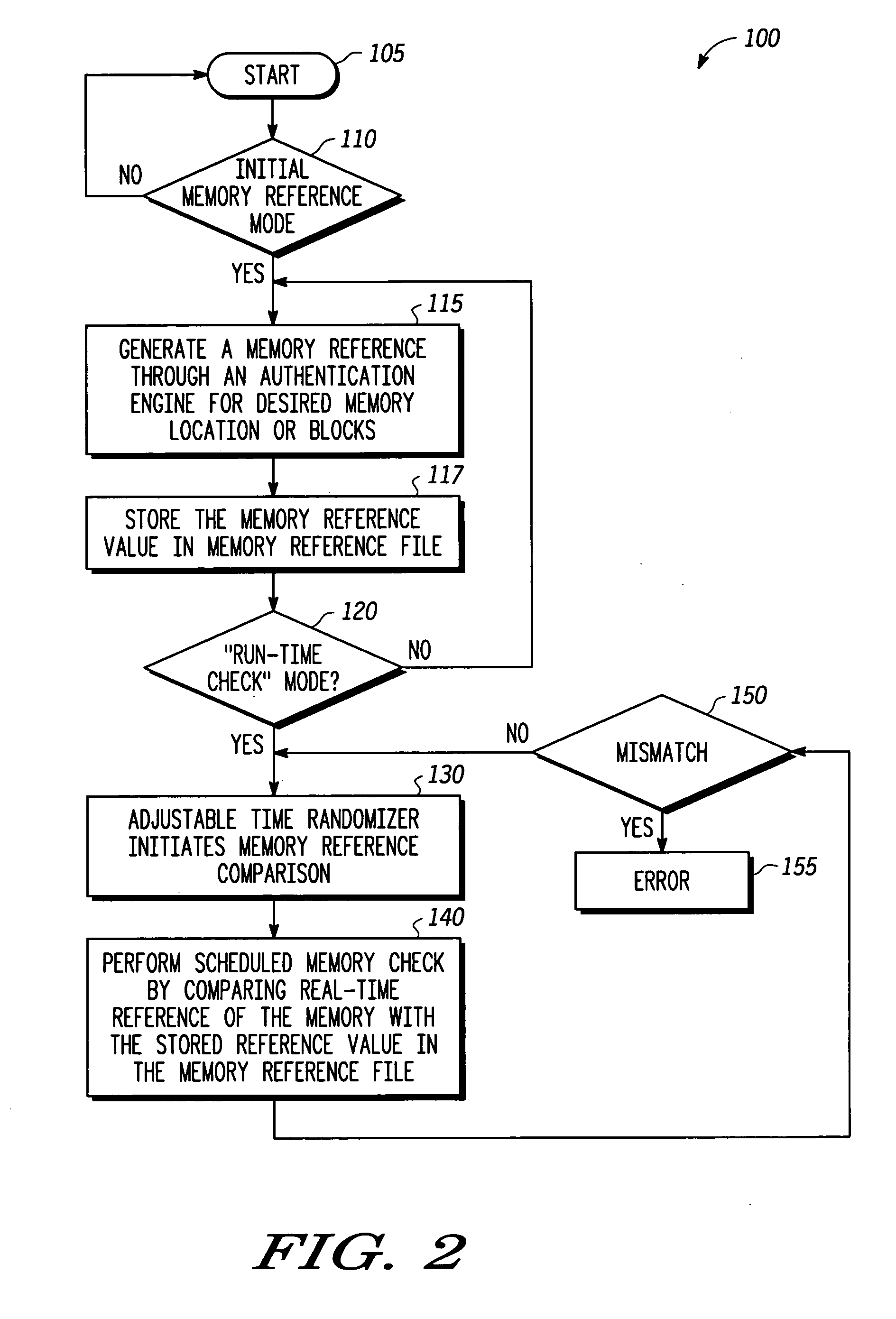Autonomous memory checker for runtime security assurance and method therefore
a runtime security assurance and automatic memory technology, applied in the field of software security assurance, can solve the problems of untrusted user application code or downloaded dynamic code being run, memory corruption on the original, and a significant security threat to embedded system software at runtime,
- Summary
- Abstract
- Description
- Claims
- Application Information
AI Technical Summary
Benefits of technology
Problems solved by technology
Method used
Image
Examples
Embodiment Construction
[0014] The following detailed description is merely exemplary in nature and is not intended to limit the invention or the application and uses of the invention. Furthermore, there is no intention to be bound by any expressed or implied theory presented in the preceding technical field, background, brief summary or the following detailed description.
[0015]FIG. 1 is a block diagram of an autonomous memory checker 10 in accordance with one embodiment of the present invention. A host processor (not shown) first sets programmable parameters such as memory start addresses, lengths, direct memory access (DMA) read frequency, maximum burst size, and memory block enables. The host then sends a command via host bus 50 to a controller 25 of autonomous memory checker 10 to start an initial memory reference mode. In the initial memory reference mode, controller 25 requests a DMA controller 15 to fetch the memory contents via a DMA master bus 45. The memory content is trusted information. An aut...
PUM
 Login to View More
Login to View More Abstract
Description
Claims
Application Information
 Login to View More
Login to View More - R&D
- Intellectual Property
- Life Sciences
- Materials
- Tech Scout
- Unparalleled Data Quality
- Higher Quality Content
- 60% Fewer Hallucinations
Browse by: Latest US Patents, China's latest patents, Technical Efficacy Thesaurus, Application Domain, Technology Topic, Popular Technical Reports.
© 2025 PatSnap. All rights reserved.Legal|Privacy policy|Modern Slavery Act Transparency Statement|Sitemap|About US| Contact US: help@patsnap.com



